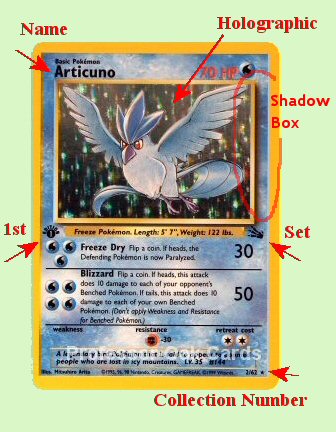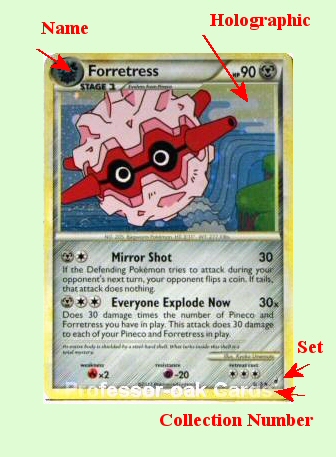No, it's not easy. Pokémon cards come in packs, boxes, tins, promo packs, prizes and give-a ways.
And each one is different!
Worse yet, they have been manufactured by two different companies. Older cards were manufactured by Wizards of the Coast. Current cards are manufactured by The Pokémon Company International.
This should help you get a little more familiar with the cards, but it is by no means an exhaustive description of all variations of Pokémon cards that have been made.
Sets:
Each Pokémon card is associated with a set. Sets are released typically four times a year, and all the cards in a set will have the same symbol identifying the set.
You can see all of the Pokémon Sets and their symbols here: Pokémon Sets
For the older cards, the set symbol is on the right half of the card, just below the Pokémon picture.
Cards from Wizards of the Coast
 |
Here we have an Articuno card from the Fossil Set, which was the third set printed by Wizards of the Coast. (1999) The image has a semi-holographic background, we call this "Holo" for short in the US.
In the lower right is the collection number 2/62. This means it is card #2 out of 62 cards in the set. Secret rare cards are numbered higher than the number of cards in the set. In the Team Rocket set, the Dark Raichu card was numbered 63/62. Wizards of the Coast liked to print the first run of cards with the 1st edition symbol on them. These cards are more valuable than non-fist edition cards. Pokémon International does not produce 1st edition cards.
In General, Wizards of the Coast made 16 of the rare cards in each set Holo, and all the other cards were plain. Even some other rare cards. |
Cards from The Pokémon Company International
 Holo Version Reverse Holo Version |
Here we have an Forretress card from the Call of Legends Set. You can see that the style of the card has changed considerably. As the Pokemon TCG grew in popularity and evolved, the style of the cards have also continued to change. HolosThe image has a semi-holographic background. We call this a "Holo" in the US.
The Pokémon Company generally makes about half of the rares in a set Holo, the rest of the cards non-holo, and then in addition, makes a reverse Holo version of every card. Secret rares are usually reverse Holo only. Reverse Holos can be identified by a holographic sheen seen around the entire card inside the border, but outside of the usually place reserved for normal holos. Reverse HolosFor the Forrestress example, the reverse holo sheen can be seen over the name of the card and also on the entire surface of the abilities section of the card, where the weaknesses and resistance information is displayed.
|
Base Set cards from Wizards of the Coast
|
|
Base Set cards from Wizards of the Coast
|
|
Base Set cards from Wizards of the Coast
|
|
 |
Base Set cards from Wizards of the Coast
|